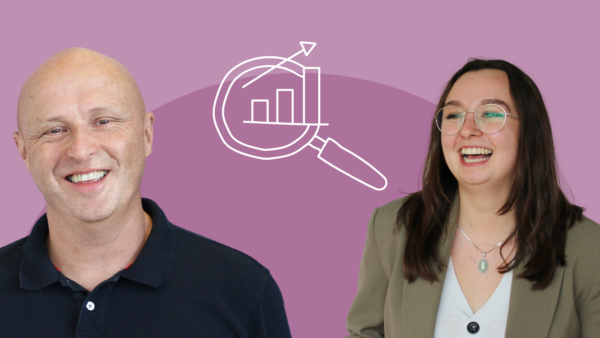Simply put, people who use their strengths experience better outcomes than those who don’t. What exactly do I mean by that though? Well, daily strength users enjoy higher levels of well-being, lower stress levels, higher levels of motivation, are more effective at problem-solving, have improved relationships at work, higher self-confidence, see greater career success and enjoy higher levels of job satisfaction. For the research findings which back up all of that, check the references at the end of this blog.
What we also know is that if you seek to learn and develop in areas of strength, where energy and motivation already exist, you’re also more likely to see quick and strong results. Today’s podcast is about directing your learning towards areas of strength – why and how.
Since forever, organisations have been telling their employees to focus their development and learning activities firstly on those areas where they are falling down, to build their personal development plans around their weaknesses, or development needs, or shortcomings, or improvement areas. Basically, where there is a high chance of failure for them and where performance is poor at the moment.
And this has merit to an extent, because if there are skill areas that are really holding you back in your role or career, you’re probably right to do something about them. The problem with this approach though is that if it is taken too far or too literally, it becomes the sole focus for learning that employees are ever encouraged to use. And so those qualities that people naturally use well, even to an exceptional level, by that I mean their strengths, are often ignored because ‘they ain’t broke so there’s nothing to fix’; which is a crying shame because those areas might just present the greatest potential for their development.
Odd as it may sound, think of you as a boat – a hole in your boat below the waterline might represent those weaker skill areas for you that if you don’t work on them, will, in the end, sink your boat. But once you’ve patched up those holes and got them to a point where they aren’t sinking you, is continuing to work on them actually ever going to get you to a point where you’re going to get energy and strength from them? Is working on them forevermore going to be a big driver of your success? Or is there something else that’s going to help propel you forward towards your role and career goals?
Research shows that if you focus your attention, energy and development on those areas that are already strong in you, this can put wind in your sails and help move you towards success much more quickly than if you work exclusively on your boat-sinking weaknesses.
By way of example, in a study in Nebraska USA to test the best way to teach rapid reading with 6,000 students, there was found to be no significant difference between the methods tested, but what the researchers did find is that those students who could read fastest to start with improved more than others (their performance went from 300 to 2,900 words per minute, on average).
The students who naturally read more slowly made some gains too, but those gains were tiny by comparison to the students who started off with reading as a clear strength. The researchers came up with a new hypothesis: that the greatest gains in learning can be achieved through investing in what people do well naturally. They hypothesised that it might be possible to go from, say, +10 to +40 performance with the same effort as it takes to go from -10 performance to 0 or neutral.
So then, if we should be directing more of our learning efforts towards our areas of strength, how can we do that practically? I have some suggested steps below:
1. Know your strengths
what are those areas that naturally energise you and that you already do well or have the potential to do well when using? To do that, you’ll need a valid, reliable strengths assessment tool…one that speaks the language of the world of work and which you can understand easily. My recommendation would be Strengthscope, because it is, and does, all of those things, and was originally developed to address some of the shortcomings of other strengths assessment profilers in the marketplace. Plus, ideally the tool you choose should have a recognised accreditation behind it, like the British Psychological Society’s registered test status, which Strengthscope does.
Let’s say that you’ve done that and that you’ve identified your Strengthscope Significant 7 strengths, as well as the Top 3 which represent you at your absolute best. It’s likely that these areas will be your greatest assets for propelling yourself forward in your development, as long as you have honed and developed these strength areas by making sure you have the skills and support and experience in using them in different contexts. As well as pointing those strengths towards whatever goal or challenge you are facing right now.
2. Identify skill areas that can help you get the very best from your strengths
Say one of my natural character strengths is Leading. This means that I get energy from influencing and motivating others towards a goal and towards success. However, without developing skills in this natural area of strength for me, I’m unlikely to ever realise the full positive potential of my strength.
So I would do well to look for opportunities to develop this natural strength by learning for example, how to set vision, how to give positive and constructive feedback, how to coach others well, how to manage stakeholders and all those other skill areas that I would need to develop as a leader to be able to use that strength really effectively.
If I have a natural strength in Collaboration, meaning that I am energised by working with groups and teams towards a mutual goal and building common ground between parties, I could develop this from a skills point of view by looking for learning opportunities that help me get better at influencing, negotiating and facilitating, so that I can get the best from any collaborative work that I am involved in. Strengthscope covers 24 work-based strengths with clear links between each strength and the skills that can supercharge each strength to deliver its greatest potential value.
3. Look for real, practical opportunities where you can utilise your strengths in a work (or even outside of work) environment in new and stretching ways
The thing with our strengths is that we very often become very habituated to using them in certain ways and in certain contexts because that’s where we feel comfortable and confident. So, stretching strengths to use them differently, and potentially to create greater value, doesn’t come easily, but the payoff can be significant, with increased opportunity for promotion and career development as your supercharged strengths become visible to more stakeholders.
4. Find others who can support your developmental journey
Who already role model use of one or more of your strengths in ways that you admire and respect. Ask for their guidance and input, their ideas on what you can do to take your strengths to the next level of evolution either through learning or experience.
The benefits of channelling employees’ development through their strengths are significant: higher, more sustainable levels of performance; greater motivation to learn in areas where confidence and energy are already high; personalisation of the employee experience in ways that many people now expect, but which is still at an early stage as regards personal development at work; and the promotion of a continuous learning culture, making your organisation more agile, ready for change and able to flex to meet market challenges.
References
Boniwell, I. (2012). Positive psychology in a nutshell: the science of happiness (3rd ed). Berkshire: Open University Press.
Cameron, K.S., Dutton, J.E. and Quinn, R.E. (2003). Positive Organizational Scholarship: Foundations of a New Discipline. San Francisco, US: Berrett-Koehler.
This podcast is available on all major podcast platforms. Find it on Apple podcasts, Spotify, Google podcasts, Stitcher, ACast and Soundcloud. Check out the back catalogue and subscribe to get them every Monday morning.












